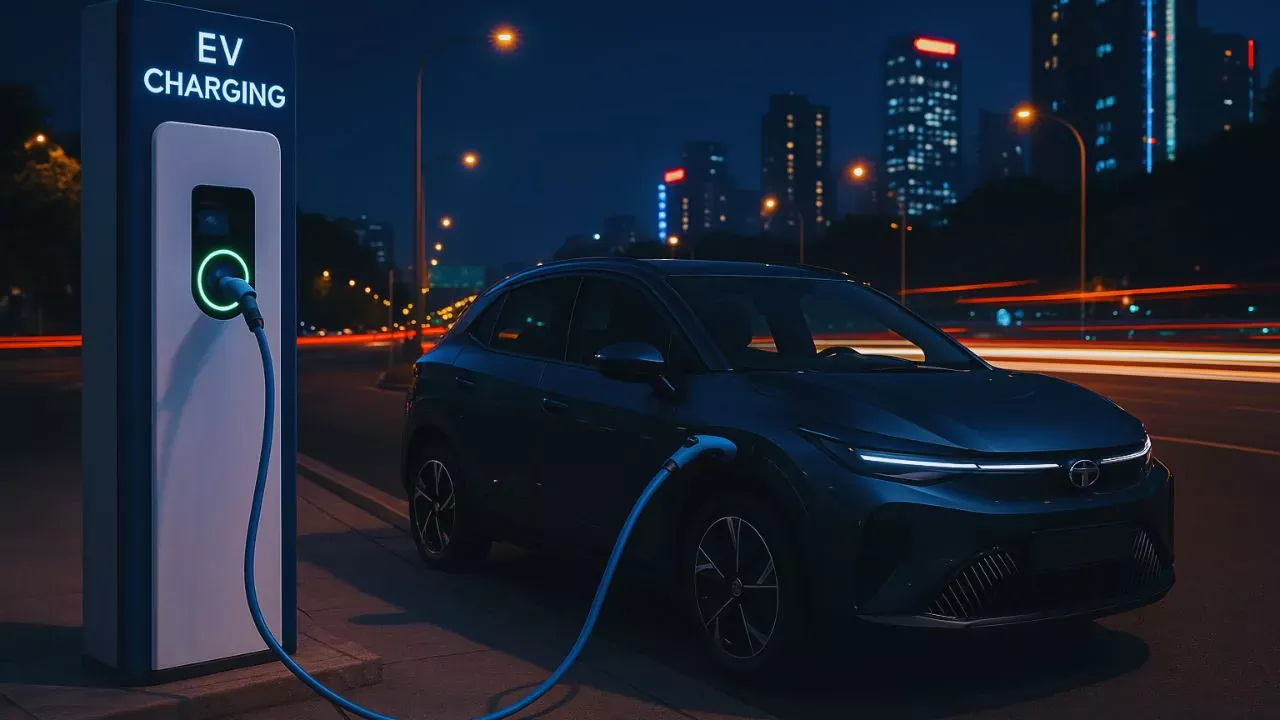India’s electric vehicle (EV) charging infrastructure is witnessing a massive surge in electricity consumption, highlighting the growing adoption of EVs across the country. According to the latest data from the Central Electricity Authority (CEA), public charging stations (PCSs) consumed 590.06 million units (MU) of electricity in the first three quarters of FY25, reflecting an 85% year-on-year (Y-o-Y) growth.
Delhi Leads in EV Charging Power Consumption
Delhi emerged as the top consumer of electricity for EV charging, using 258.83 MU between April and December 2024. This accounts for 43.87% of the total power consumed by PCSs in India and represents an 83.27% increase compared to the previous year.
Following Delhi, the states with the highest PCS electricity consumption were:
- Maharashtra – 149.67 MU (+65.38% Y-o-Y)
- Gujarat – Data not disclosed
- Haryana – 17.53 MU (+75.53% Y-o-Y)
- Andhra Pradesh – 17 MU (+89.86% Y-o-Y)
Why Is EV Charging Power Consumption Increasing?
The sharp rise in electricity consumption is attributed to the increasing adoption of EVs, particularly electric two- and three-wheelers. These vehicles are widely used for last-mile deliveries by e-commerce and quick commerce companies, significantly increasing demand for public charging infrastructure.
India’s Expanding Charging Network
As of March 2025, India has around 26,367 public EV charging stations (PCSs). The states with the highest number of charging stations are:
- Karnataka – 5,879 PCSs
- Maharashtra – 3,842 PCSs
- Uttar Pradesh – 2,113 PCSs
- Delhi – 1,951 PCSs
- Tamil Nadu – 1,495 PCSs
Despite this growth, experts believe that the financial viability of PCSs remains low due to underutilization. According to FICCI’s EV Public Charging Infrastructure Roadmap 2030, current utilization rates are below 2%, whereas profitability requires an 8-10% utilization rate by 2030.
Challenges Facing India’s EV Charging Infrastructure
While the rise in EV adoption is promising, several key challenges remain:
- High Infrastructure Costs – Setting up charging stations requires significant investment.
- Low Utilization Rates – Many PCSs operate at low capacity, making them financially unviable.
- Unreliable Power Supply – Charging stations need uninterrupted electricity to function efficiently.
- Non-Standardized Charging Protocols – Lack of uniform charging standards affects interoperability between different EVs and charging stations.
- Electricity Tariff Structures – Fixed tariffs in some states make it difficult for PCSs to break even. While states like Uttar Pradesh, Delhi, and Gujarat have low or no fixed tariffs, others impose high charges, affecting viability.
The Road Ahead
To make India’s EV charging network sustainable and profitable, experts recommend:
- Increasing utilization rates by encouraging more EV adoption.
- Government incentives for PCS operators to offset high setup costs.
- Standardizing charging protocols to ensure compatibility across all EV brands.
- Lowering fixed electricity tariffs to improve profitability.
With the Indian government’s continued push towards electrification and sustainable mobility, the EV charging infrastructure is expected to grow significantly in the coming years. However, addressing the financial and operational challenges will be crucial to achieving a seamless and efficient charging network across the country.

